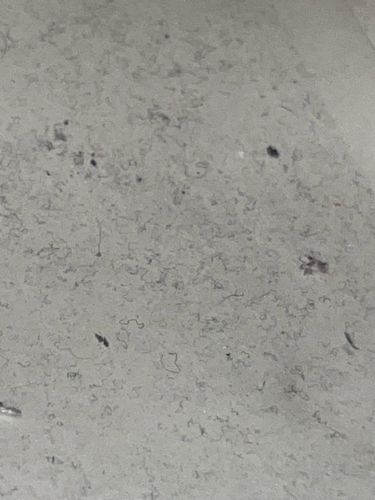Springtail
Scientific Name: Collembola (general classification, as precise species identification from the image is not possible)
Order & Family: Order: Collembola (not an insect order, but a related group within Hexapoda). Families vary widely within Collembola, including Entomobryidae, Isotomidae, Sminthuridae, etc.
Size: Typically 0.2 mm to 10 mm, most commonly 1-3 mm.

Natural Habitat
Damp environments such as soil, leaf litter, decaying wood, under bark, in compost piles, and on the surface of freshwater puddles or ponds. They are very common in homes, especially in areas with high humidity like bathrooms, kitchens, and basements.
Diet & Feeding
Mainly detritus, decaying plant matter, fungi, algae, and bacteria. Some species may also consume pollen or small invertebrates.
Behavior Patterns
Springtails, like other entognaths, are known for their ability to jump using a furcula, a spring-like appendage tucked under their abdomen. When disturbed, they release the furcula, propelling themselves into the air. They are detritivores, playing a role in decomposition. Many species are active in moist environments and can be found in large aggregations, particularly in soil or on the surface of water.
Risks & Benefits
Springtails are generally harmless to humans, pets, and plants. They do not bite, sting, or transmit diseases. In gardens and natural ecosystems, they are beneficial decomposers, helping to break down organic matter and cycle nutrients. In homes, large infestations can be a nuisance, but they typically indicate high humidity or moisture problems.
Identified on: 8/29/2025